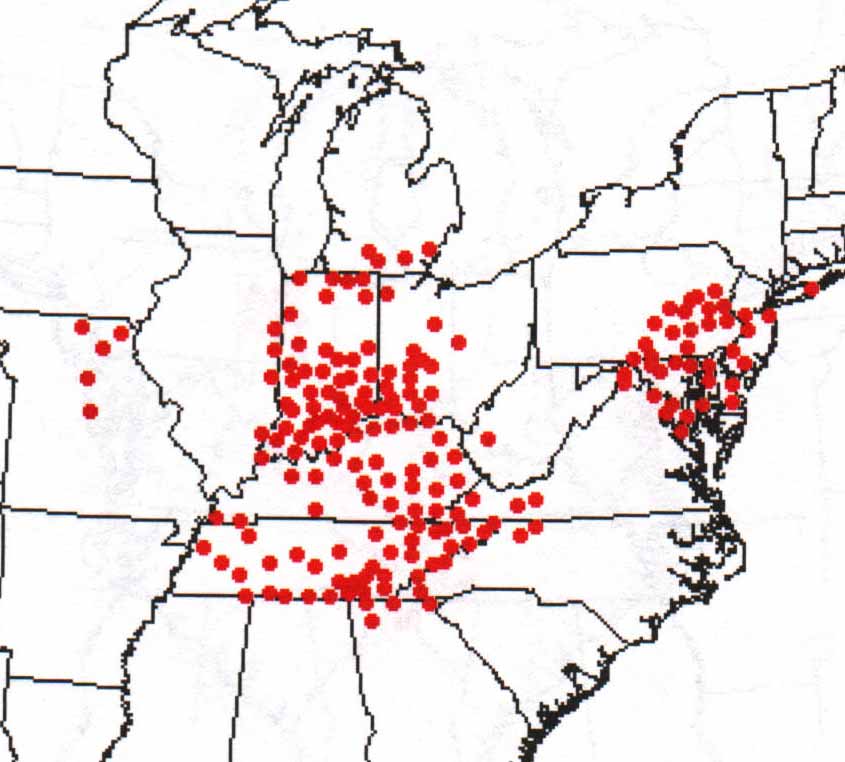Cicadas How will the 17 year Invasion affect us?
You've heard the warnings - it's time for the 17 year Cicada invasion. Now, here are some facts that may be of interest.
There are actually two types of cicadas commonly found in Ohio. The first is known as the "annual cicada" or "dog-day cicadas". These are large insects, purple-black in color with green markings and large, transparent wings. They are sure to join us every year usually in July and August (hence the name "dog-day" cicadas).

The cicada in the news today is the "periodical cicada" which spends the majority of its lifetime underground. Once it has reached adult stage it will emerge, usually in April or May. The most interesting thing about the periodical cicada lives in the ground for anywhere from 13 to 17 years. In the soil the periodical cicada gets its nourishment from the juice of tree and plant roots. This nourishment helps the cicada to grow.
As an adult, the periodical cicada emerges from the soil and lays eggs on tiny branches and twigs of trees and shrubs. It only takes about a month for the eggs to hatch and produce nymphs. (Nymph is the term used to describe the immature, wingless stage of an insect that will later develop wings. The nymph stage of development only occurs in species that do not have a pupal stage.)
Once the eggs hatch and the nymphs are produces, they quickly fall to the ground and burrow into the soil. They will stay there for up to 17 years when the process repeats. The adult will live above ground for about a month during the 'egg-laying" cycle. It rarely eats during this time, conserving energy and concentrating only on reproducing so that the cycle can continue.
The nymph emerges from the ground and climbs up a tree to attach itself to a twig and sheds its nymphal skin. What emerges is the adult periodical cicada, prepared to begin the reproduction process. You have probably seen the exoskeleton or hard outer shell of the nymph in your yards or still attached to small trees throughout the summer.
Many people erroneously interchange the name cicada and locust. Locusts are actually much smaller and more like a grasshopper than a cicada. The one undeniable characteristic of a cicada is the sound it makes, usually referred to as its "song". It is a very loud buzzing noise made only by the male. The male cicada has a drum-like abdomen and when internal organs vibrate against it the resulting noise is loud and distinctive.
Periodical cicadas are smaller than the dog-days cicadas. They have red eyes and dark brownish-black bodies. The usually measure about an inch in length, sometimes a little larger. They do not bite and they do not sting. They emerge only for the purpose of propagating the species.
The damage done to trees (especially oak, apple, hickory and dogwood) by periodical cicadas is the result of the female making two parallel slits in twigs. She then lays up to 48 eggs in these slits. She will continue this process, as more slits are required. The affect on the twigs is browning, scarring and breakage.
Most large, healthy trees will not be greatly affected. The smaller, newer trees however can be devastated by the emergence of the cicada. Some tree growers do very little pruning, if any, the season before the emergence, allowing for damaged limbs to be pruned after the cicada activity.
Others protect their small shrubs and trees with something like cheesecloth.
It is Brood X that is emerging this year. Yes, there are other broods scheduled to emerge in other years, but the cycle that will affect Ohio is Brood X. You may remember Brood V in 1999 or Brood VIII in 2002. Both affected Ohio. There are so many broods in fact, that almost every year a brood is emerging somewhere, and often times they will overlap. So why the excitement about Brood X? Because it is the largest and covers the most area. It runs from the eastern seaboard west through Indiana and south to Tennessee. 
The states involved will be Delaware, Georgia, Illinois, Indiana, Kentucky, Maryland, Michigan, North Carolina, New Jersey, New York, Ohio, Pennsylvania, Tennessee, Virginia and West Virginia.
Cleveland is not a large emergence spot, but Cincinnati will be greatly affected. For the most part the southwest portions of Ohio will be most affected.
Some people make the best of this event by having contests, games, and even cooking and recipes surrounding the periodical cicada. Others try to cover and protect everything they own and stay inside with earplugs until it's all over and it begins again in 2021!
Top of Page
Back to Critters
|



